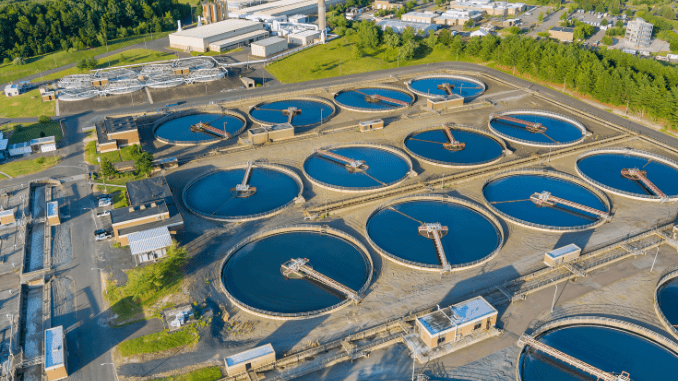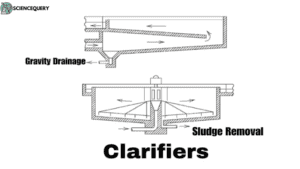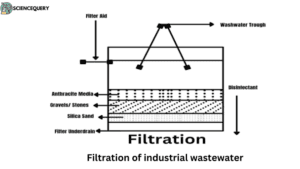
Introduction
Wastewater, also termed sewage, is basically water by weight. It is basically of three types domestic sewage, industrial sewage, and sewage from precipitation. This article is about wastewater treatment and procedures and types.
The contaminants that can be found in wastewater include suspended solids particles, biodegradable dissolved organic matter, inorganic solids wastes, nutrients, metals, and harmful microorganisms. The toxic elements present in the effluent including raw sewage and industrial wastes pose a dangerous threat to aquatic life.
The industrial wastes containing harmful chemicals when discharged into the water sources without treatment contaminates the freshwater. Also, the pollutants such as harmful pathogens, and microorganisms found in effluents degrade water quality and the lives of aquatic plants and animals.
So, there is an immense need to treat the wastewater before discharged into Mother Nature.
Crucial role of wastewater treatment
The crucial role of wastewater treatment is the discharge of the effluent from sewage into water sources before proper disinfection.
Disinfecting allows the destruction of pathogens in present effluents and hence protects public health.
Preliminary treatment

This process involves the removal of large or heavy debris at the very beginning of the treatment. Preliminary treatment generally involves screening and grit removal steps.
- Screening is done to remove large suspended and floating solids from wastewater in order to protect pumps and pipes from clogging.
- Screenings are also performed for the complete removal of suspended impurities.
Primary treatment
Primary treatment is the subsequent removal of suspended inorganic and some organic particles, usually called as sedimentation.
Sedimentation
Sedimentation is the physical operation of separation of solid particles. Floatation is the term given for negative sedimentation that is used to remove impurities that are lighter than water.
The industries include sedimentation that produces highly suspended organic and inorganic solids.
This process is generally carried out in paper mills, woolen mills, oil refineries, and especially diaries.
Clarification

Clarifiers are available in two shapes, round and rectangular. They are generally large rectangular or round tanks where the sediments are solids and are allowed to settle at the bottom.
It separates solid particles from the suspended particulates from liquid. This works under the principle of gravity where heavier particles settle at the bottom of the tank.
Sludge removal
Sludge is the remaining waste that is produced as a by-product of the wastewater treatment plant. The sludges are removed as it contain harmful and toxic elements that can be threatening to aquatic life.
Hence, these sludges are further treated so as to be reused for crop fertilizers and can be used as compost in agricultural fields.
Secondary treatment
Secondary treatment is the biological conversion of dissolved and colloidal organics into biomass and the subsequent removal of biomass by sedimentation.
Biological treatment
Biological treatment is easily effective in removing 95–98% of the BOD. BOD tells us the amount of water required in the breakdown of organic matters present in r. water
Aerations and mixing
Mixing is an important unit in wastewater treatment. It is used for mixing one substance with another. For example: chlorine or sodium hypochlorite with treated wastewater.
Continuous rapid mixing is achieved by pumping the tank contents and then recycling with the help of mechanical mixers.
Tertiary treatment
Tertiary treatment is the final stage in a wastewater treatment plant.
It basically involves the removal of other remaining impurities rather than primary and secondary treatment. It removes contaminants like heavy metals and other organic matter.
Filtration

Filtration of industrial wastewater is practiced as a downstream method and hence used during the neutralization of heavy metals and biological treatment to reduce BOD loads.
Disinfection
The purpose of disinfection is the protection of the microbial water quality. The ideal disinfectant should have:
- High bacterial toxicity
- Inexpensive
- Easy to handle
- Ability to detect the presence of a residual.
Chlorine is one of the oldest disinfection agents used today.
The disinfection of water in treatment plants ensures safety measures and focuses on the quality of drinking water. It is done by different processes, such as chlorination, UV radiation, ozonation, and filtration.
Chlorination
It is a commonly used method in the disinfection of water in treatment plants as it is easily controllable and safely monitored. Chlorine dissociates in water
The UV radiation process
Is also effective but requires special equipment that is not cost-effective. Ultraviolet or UV light is a bacterial disinfectant.
Ozonation
It is the process of breaking down ozone into water molecules, hence killing bacteria and viruses in the process.
Filtration
Is a very simple technique of removal of suspended solids from the water.
Nutrient removal
The nutrient removal process in wastewater treatment plants is a very complex process. It includes the removal of nutrients like nitrogen, phosphorus, and other organic compounds from wastewater before it is released into the natural water bodies.
This is done to limit eutrophication which means rapid growth of algae due to nutrient availability, leading to oxygen depletion and death of aquatic animals.
Advanced treatment
Osmosis
Osmosis is a method of advanced techniques employed towards the purification of water. It mainly involves the use of semipermeable membranes to remove the contaminants present in water.
This process is both cost-effective and widely used in treatment plants nowadays. The membranes used in osmosis help in the filtration of water and treatment so that it can be reverted back to the environment.
Nanofiltration
Nanofiltration is an eco-friendly technique used in wastewater treatment plants. The word ‘nano’ itself means microparticles; the removal of nanoparticles such as bacteria and viruses through the nanopores present in the membrane.
This process enables the deletion of harmful microbes while still retaining the beneficial minerals and ions in the water.
UV disinfection
The UV disinfection is an easy method to restrict microbial growth in water. Microbes are exposed to UV light in moderate amounts to disinfect the water.
This method is used for drinking water disinfection and wastewater disinfection.
Ozonation
In simple words, ozonation is the method of disinfection of water by the process of oxidation. This treatment helps get rid of water turbidity and odors caused during the chlorination process. A typical ozone dosage is 50-100 g ozone /m³.
Sludge treatment and disposal
It is a key process in wastewater treatment plants. Sludge contains harmful materials that ought to be removed before disposal or reuse. It limits and restricts the process by clogging pipes and producing a bad odor. It has possible contamination of nearby water sources with contaminants like heavy metals and harmful organic compounds.
Hence, necessary treatment and removal of sludge ensures protection against potential harm and maintains human health.
Effluent discharge and reuse
It is a necessary topic in the world of water management. Effluent discharge means the release of residual water from industries, agricultural waste that may contain harmful pesticides, into the water sources.
Hence, it requires continuous monitoring to prevent harmful chemicals from being released into water sources. With growing populations, there is an increasing demand for clean water and therefore finding possible methods to discharge effluents can meet the requirements.
Q&A
1. What are the 5 stages of wastewater treatment?
Five stages of wastewater treatment include:
- Screening – It is the first stage of wastewater treatment. Screening is done to remove large suspended and floating solids from wastewater in order to protect pumps and pipes from clogging.
- Primary Treatment – Primary treatment is the subsequent removal of suspended inorganic and some organic particles, usually called as sedimentation. Sedimentation is the physical operation of separation of solid particles. Floatation is the term given for negative sedimentation that is used to remove impurities that are lighter than water.
- Secondary Treatment – Here, microbes such as bacteria break down organic compounds into simpler compounds that are more easily treated.
- Tertiary Treatment – Tertiary treatment is the final stage in a wastewater treatment plant. It basically involves the removal of other remaining impurities rather than primary and secondary treatment. It removes contaminants like heavy metals and other organic matter.
- Disinfection – The disinfection of water in treatment plants ensures safety measures and focuses on the quality of drinking water. It is done by different processes, such as chlorination, UV radiation, ozonation, and filtration.
2. What are the 7 steps in wastewater treatment?
7 stages of wastewater treatment include:
Screening – Large solid particles and floating suspended matter like sticks, leaves, and other debris are removed from the water to prevent blockage of pipes.
Primary Treatment – Primary treatment involves sedimentation and floatation techniques to get rid of impurities from water.
Secondary Treatment – In this stage, biological processes involve breaking down organic matter into simpler compounds that are easily treated safely.
Tertiary Treatment – Tertiary treatment is the final stage in a wastewater treatment plant. It basically involves the removal of other remaining impurities rather than primary and secondary treatment. It removes contaminants like heavy metals and other organic matter.
Solids Separation – The solid matter is separated by processes involving settling tanks, centrifuges, and filters depending upon the size and composition of the matter.
Sludge Processing – Sludge produced during treatment is processed before disposal to prevent any contamination.
Disinfection– Finally, It is done by different processes, such as chlorination, UV radiation, ozonation, and filtration.
3. What is the basic process of wastewater treatment?
The basic processes include screening, primary, secondary, and tertiary treatments.
4. How is wastewater treated in Singapore?
Singapore has efficiently developed advanced and cost-effective technologies for treating sewage. The government has taken advanced measures to turn sewage into potable water fit for drinking purposes. They treat the wastewater by reverse osmosis process.
Reverse osmosis is a method used for water purification it focuses on the removal of ions and contaminants in water at an accuracy claiming 99%. The whole process is carried out with the help of a semipermeable membrane that allows the movement of only selective molecules.
The main motto of the Singapore government is to recycle every drop of water and thus maintain the ecological balance. They also put emphasis on the disinfection of water with the help of UV rays for the removal of possible contaminations.
Summary
- Wastewater, also termed sewage, is basically water by weight.
- It is basically of three types domestic sewage, industrial sewage, and sewage from precipitation.
- Screening is the first stage of wastewater treatment.
- It is done to remove large suspended and floating solids from wastewater in order to protect pumps and pipes from clogging.
- Primary treatment is the subsequent removal of suspended inorganic and some organic particles, called as sedimentation.
- Sedimentation is the physical operation of separation of solid particles.
- Floatation involves negative sedimentation, used to remove impurities that are lighter than water.
- Secondary treatment is the biological conversion of dissolved and colloidal organics into biomass and the subsequent removal of biomass by sedimentation.
- Tertiary treatment is the final stage in a wastewater treatment plant.
- It involves the removal of contaminants like heavy metals, and other organic matter.
- The solid matter is separated by processes involving settling tanks, centrifuges, and filters depending on the size and composition of the matter.
- Sludge treatment and removal is a key process in wastewater treatment plants. It contains harmful materials that ought to be removed before disposal or reuse.
- Finally, disinfection is done by different processes, such as chlorination, UV radiation, ozonation, and filtration.
References
https://www.sciencedirect.com/science/article/pii/S0960852409016095
